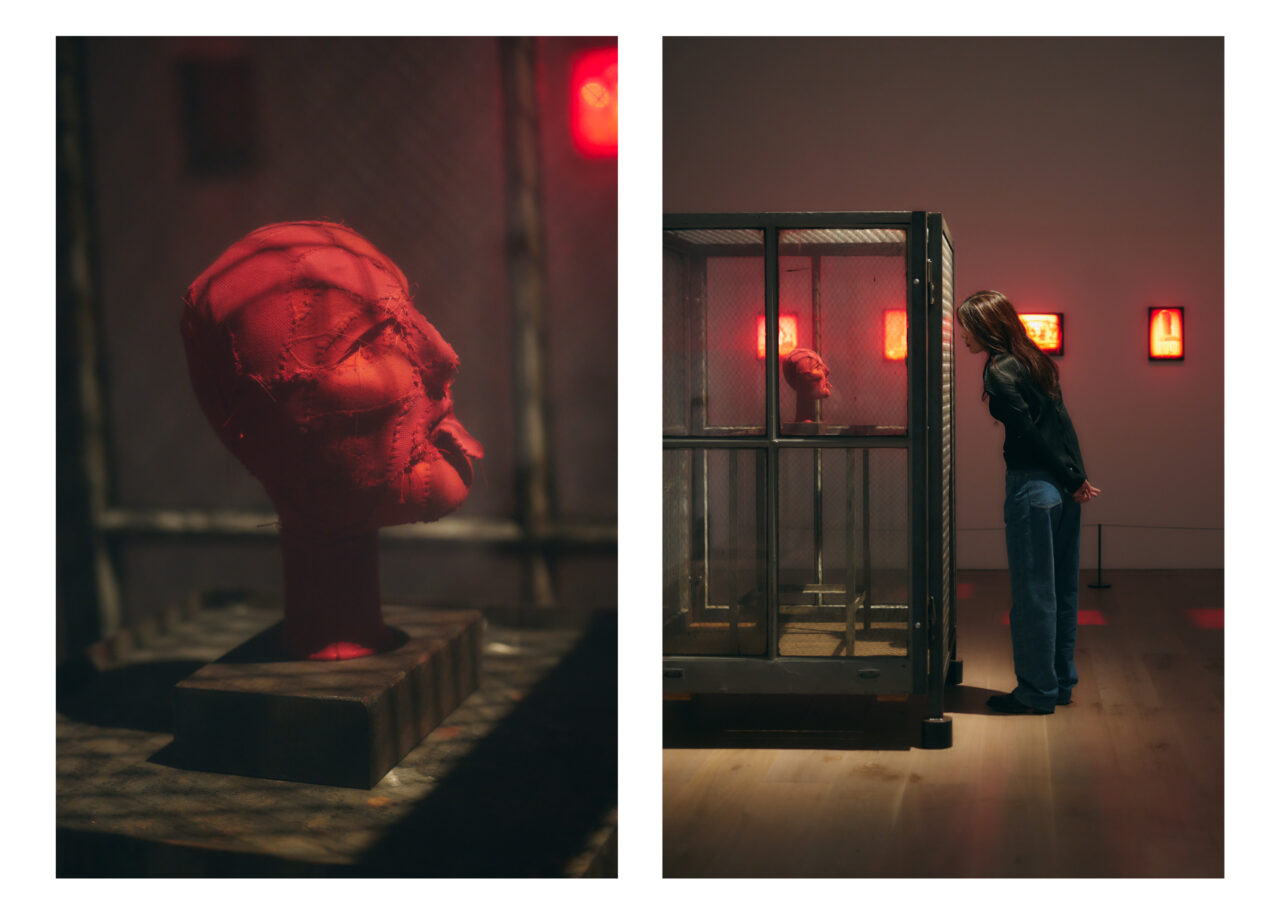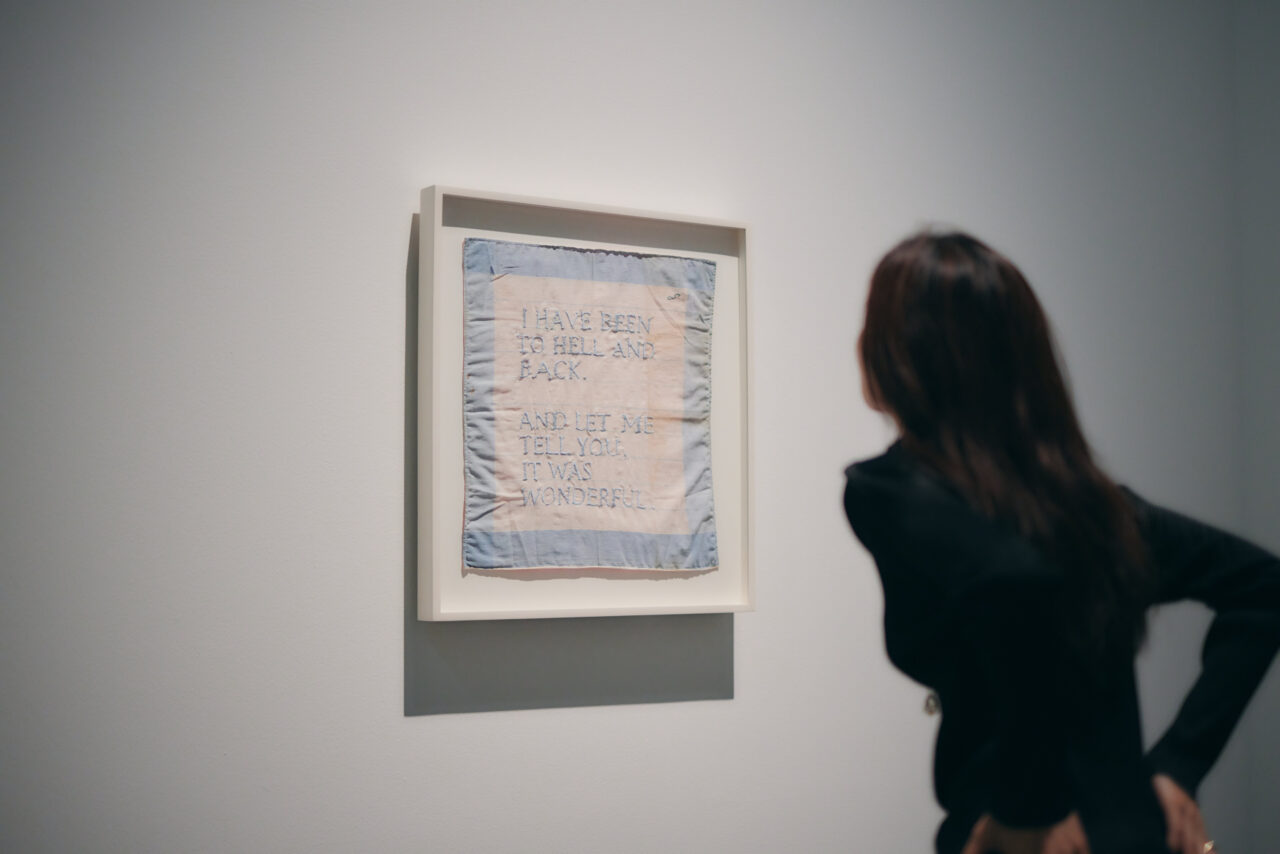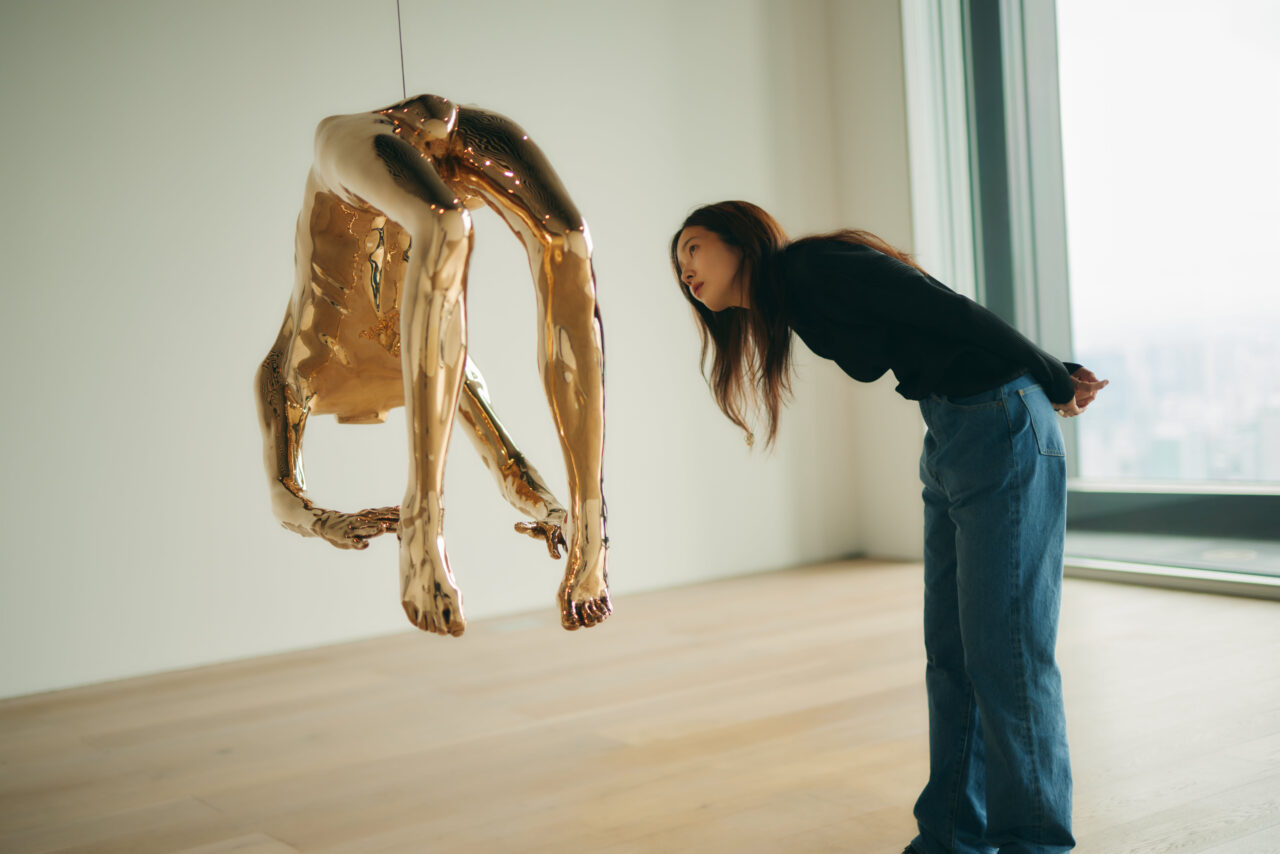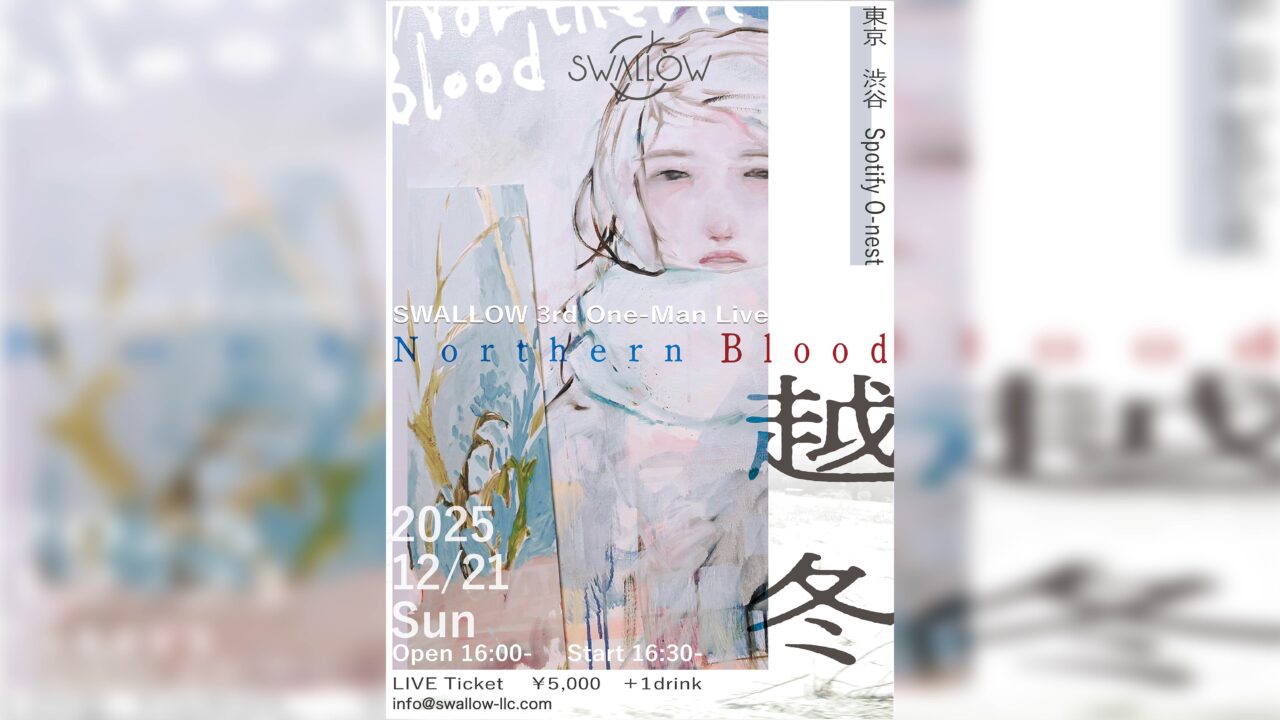INDEX
Using Familiar Tools for Clearer Communication
The head portrait was titled “Cell X (Portrait) (*),” wasn’t it?
haru.: I don’t really see myself as an artist, but since I create works using selfies, I felt a sensory connection to it.

Why do you use selfies as a medium?
haru.: When women living in the present create something to convey a message, I feel that if the method is too distant, it becomes harder to communicate. I also think it’s important that the process is something easily accessible to me. So, I created a series of works where I embroider words on fabric scraps and wear them, taking selfies. The embroidery becomes reversed in the photo, making the words readable. When I question what’s considered “normal,” I unintentionally end up using very familiar tools.
The subtitle of this exhibition, “Untitled (Back from Hell),” also features a work where you embroidered on your late husband’s handkerchief, a familiar material.
haru.: I think it’s pretty intense to stitch on something so personal, like my late husband’s handkerchief [laughs]. It was a piece I was really looking forward to seeing in person.

It seems that half of the works displayed, including “Untitled (I Have Been to Hell and Back),” were created after Louise Bourgeois turned 80, and I’m overwhelmed by the energy she continued to produce art with at that age.
haru.: I feel that the anger and sadness that drove her at that age were likely a result of the immense damage she experienced throughout her life. For me, too, I often feel that the words of politicians and the state of society make it hard to feel hopeful. Of course, there are many happy moments every day, but there’s always some lingering anxiety. The motivation to create driven by anxiety and anger is something I deeply relate to.
Even though the origins may differ, emotions like anxiety and anger are feelings that are very familiar to us living in the present.
haru.: Anxiety and anger are often dismissed or underestimated, and we’re expected to just accept them as “how things are.” But when I look at this exhibition, I realize that the emotions Bourgeois dealt with aren’t that far from our own, and I think it’s important to recognize that those feelings are worth talking about. I believe I go to art to find some kind of response or hint to help me answer questions like, “Is the conflict and anger I feel really my fault, or is it something I must accept?



























